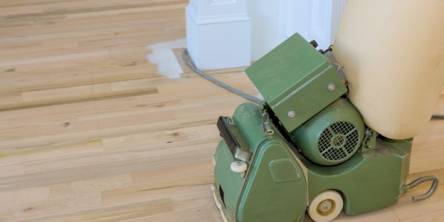Prepare Your Roof for Autumn

Long gone are the long summer days when the weather was warm enough to spend the entire day outside. The approaching autumn reminds us to don our jackets and brace for colder weather because autumnal rains are on their way. Just as we need to clad extra so does our roof need some extra protection and care for the coming winter. The tiles might have survived a summer storm or two but autumn ushers in a whole new set of challenges, putting the roof’s water tightness to the ultimate test. So, what are the steps that homeowners can take to prepare the roof for autumn?
First thing’s first: Cleaning the gutters
The biggest change in the landscape that autism brings is the abundance of fallen leaves. While a rake is more than enough to fend off your backyard and the driveway from this menace, clearing the roof is a bit harder. Because it is hard to access the rood and the gutters, many people simply disregard this chore and fail to complete it before a heavy rainfall. What happens next is every homeowner’s worst nightmare: the gutters overflow causing a flood or even falling down from the roof.
Since a falling gutter has the potential to seriously injure someone, cleaning them at the start of autumn should really be made a priority. If you don’t feel confident enough to step onto the roof to clear all the debris, that’s just fine. In fact, all you need to do is get ladders and clear the gutters itself. Once you ensure that rainwater can freely flow down the roof, you should be safe. However, this is no easy task, as many people have injured themselves cleaning the gutters.
Working with the ladders
The trick to staying safe while cleaning the gutters is the constant repositioning of the ladders. People tend to get carried away and they extend their arm’s reach instead of climbing down and moving the ladders. This way, they shift their center of balance to the virtual tipping point. There is nothing interesting in falling from a couple of meters’ height so take the effort to go down, move the ladders and go back up again. Finally, make sure that the ground you are placing the ladders on is even and without any bumps.
Remove all of the debris
Although leaves are the prime suspect when it comes to clogged drains, there is other debris that needs to go as well. Pine needles and an odd baseball should also be removed because they can gather up moss over time so a clog can form around them. If you find some places, like the roof joints and edges hard to reach, get a broom to clear those areas. Once again, don’t overlean!
Securing the flashings
Apart from the gutters, the most vulnerable area of your roof is flashings. They are placed around openings in the roof’s structure, like skylights, chimneys, and air vents. If you experience a flood in the attic, there is a big chance that one of the flashings is leaking somewhere. This could be caused by a tear in the caulking or the flashing might simply be missing.
A hailstorm, typical to summertime, can rip a flashing right off the roof without you even noticing until the rainy season starts. This is the downside of composite materials or tin flashings. On the other side, a high-quality lead flashing is less likely to be blown off by a strong gush of wind. In fact, lead can even withstand a falling branch of a smaller size!
Battling possible roof damage
A faulty flashing can tear a hole inside your roof but this doesn’t mean that other parts of the roof’s structure won’t cause any problems. Anchors that hold the gutters can loosen, threatening the structural integrity of the entire drainage system. Sometimes a bit of screwing down using a screwdriver can help save the day. On the other side, roof tiles have been known to crack in a way that the next big storm can blow them away. While you are cleaning the gutters, be on the lookout for the smallest of cracks in roof tiles.
Is the insulation in order?
Once you know that your roof is structurally safe, it is time to head up the attic. Here, you want to check the insulation for possible damage. It can originate from moisture and even rodents that like to nibble on it. You need to keep rats and mice far away from insulation as possible. Otherwise, the utility bill will go up this autumn because you will be wasting energy instead of saving it. The more thorough the inspection of the roof’s understructure, the less likely it is that you will have holes in your home budget (and the roof).
By taking all the preventive measures listed in order to prepare your roof for autumn, you are saving yourself a lot of trouble when the first rains start. The weather is only going to get worse so a well-prepared is essential for staying dry (and safe) indoors.
Similar Articles
Wooden floors have long been the subject of admiration for their classic beauty, natural warmth, and strength.
When it comes to giving your home a fresh coat of paint, most homeowners focus on choosing the perfect color and finish.
The holiday season transforms neighbourhoods into glowing wonderlands, but today's homeowners are moving beyond the traditional approach of simply stringing lights wherever they fit.
City homes face a constant challenge around outdoor space. Gardens are small or nonexistent, balconies are narrow, and any outdoor area feels precious.
Anyone who's worked in a commercial kitchen knows they operate with an efficiency that home kitchens rarely match.
When you want to transform your home with a complete makeover, you must find the best ways to save money. Let's check some cost-saving tips for renovating.
Handrails are one of the few things that merge safety, fashion, and structural importance in a home most naturally when the home is being either designed or renovated.
Cabinets play a vital role in any home, combining function, organization, and aesthetic appeal. Whether in the kitchen, bathroom, or living area, cabinetry defines the layout, storage capacity, and overall look of a space.
Every homeowner eventually faces the question: Should I repair or replace my roof entirely? It’s not always an easy decision.









